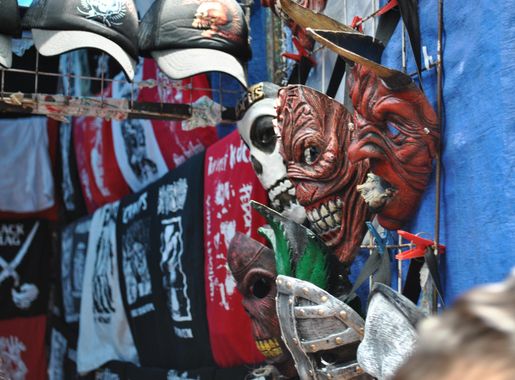
Chapultepec: The Cultural Heartbeat of Guadalajara
Experience the vibrant culture, art, and nightlife of Chapultepec, the beating heart of Guadalajara, where tradition meets modernity in every corner.
Chapultepec, nestled in the vibrant city of Guadalajara, is a dynamic neighborhood that offers a rich tapestry of cultural experiences, modern conveniences, and historical charm. This area is renowned for its bustling Avenida Chapultepec, a central boulevard lined with trendy cafes, eclectic restaurants, and lively bars, making it a favorite hangout for both locals and visitors. As you stroll down this avenue, you can feel the pulse of the city, with street performers, art installations, and weekend markets adding to its unique atmosphere. One of the highlights of Chapultepec is its thriving art scene. The neighborhood is dotted with galleries showcasing contemporary Mexican art, and you’ll often find open-air exhibitions and murals adorning the streets. Chapultepec is also home to several cultural landmarks, including the iconic Glorieta de los Niños Héroes, a monument honoring six brave cadets from the Mexican-American War. This blend of artistic expression and historical significance makes Chapultepec a fascinating destination for culture enthusiasts. The neighborhood's green spaces, such as Parque Revolución, offer a serene escape from the urban hustle. Here, you can relax under the shade of trees, enjoy a leisurely picnic, or even join a yoga session. For those interested in the culinary scene, Chapultepec does not disappoint. From traditional Mexican cuisine to international flavors, the diverse array of dining options ensures that every palate is satisfied. As night falls, the neighborhood transforms into a vibrant nightlife hub, with music venues and rooftop bars providing the perfect backdrop for an unforgettable evening.
Local tips in Chapultepec
- Visit on weekends to experience the bustling open-air markets and street performances along Avenida Chapultepec.
- Explore local art galleries and street murals for a taste of contemporary Mexican art.
- Don’t miss the Glorieta de los Niños Héroes for a touch of historical significance.
- Try a variety of dining options, from traditional Mexican dishes to international cuisine.
- Enjoy the nightlife with visits to rooftop bars and live music venues.
- Take a relaxing break at Parque Revolución, perfect for picnics and outdoor activities.
Chapultepec: The Cultural Heartbeat of Guadalajara
Chapultepec, nestled in the vibrant city of Guadalajara, is a dynamic neighborhood that offers a rich tapestry of cultural experiences, modern conveniences, and historical charm. This area is renowned for its bustling Avenida Chapultepec, a central boulevard lined with trendy cafes, eclectic restaurants, and lively bars, making it a favorite hangout for both locals and visitors. As you stroll down this avenue, you can feel the pulse of the city, with street performers, art installations, and weekend markets adding to its unique atmosphere. One of the highlights of Chapultepec is its thriving art scene. The neighborhood is dotted with galleries showcasing contemporary Mexican art, and you’ll often find open-air exhibitions and murals adorning the streets. Chapultepec is also home to several cultural landmarks, including the iconic Glorieta de los Niños Héroes, a monument honoring six brave cadets from the Mexican-American War. This blend of artistic expression and historical significance makes Chapultepec a fascinating destination for culture enthusiasts. The neighborhood's green spaces, such as Parque Revolución, offer a serene escape from the urban hustle. Here, you can relax under the shade of trees, enjoy a leisurely picnic, or even join a yoga session. For those interested in the culinary scene, Chapultepec does not disappoint. From traditional Mexican cuisine to international flavors, the diverse array of dining options ensures that every palate is satisfied. As night falls, the neighborhood transforms into a vibrant nightlife hub, with music venues and rooftop bars providing the perfect backdrop for an unforgettable evening.
Iconic landmarks you can’t miss
Rotonda de los Jaliscienses Ilustres
Explore the Rotonda de los Jaliscienses Ilustres, a stunning monument and park in Guadalajara celebrating the illustrious figures of Jalisco.
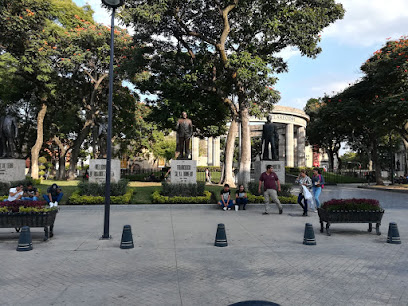
Glorieta de las y los desaparecidos
Explore the Glorieta de las y los desaparecidos in Guadalajara, a profound historical landmark honoring lives lost to violence and injustice.
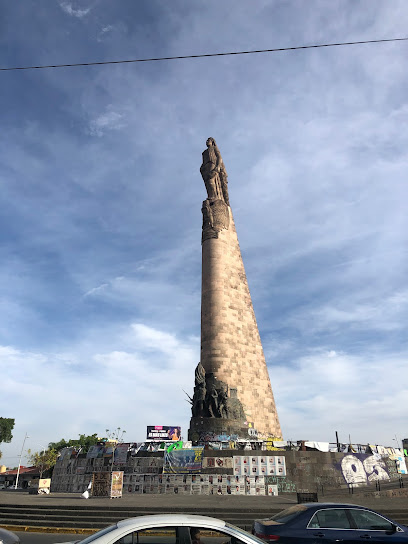
Avenida Chapultepec
Discover the vibrant cultural heart of Guadalajara at Avenida Chapultepec, where art, social clubs, and local flavor come together.
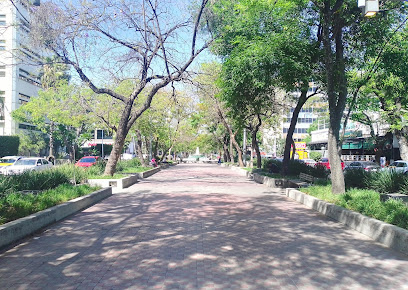
Monument Square of the Republic
Explore the Monument Square of the Republic, a historic landmark in Guadalajara, blending culture, relaxation, and vibrant city life in one iconic space.
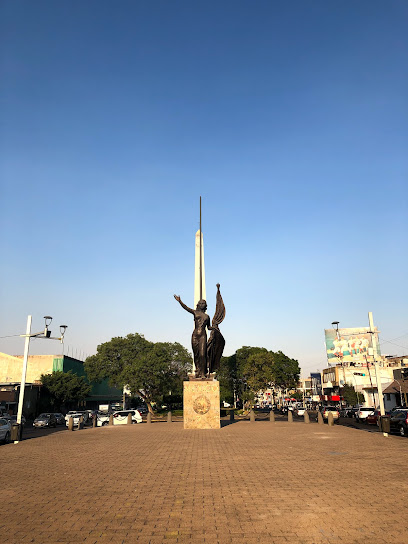
Corredor Cultural Chapultepec, Guadalajara, Jalisco.
Explore the vibrant Corredor Cultural Chapultepec in Guadalajara, where art, culture, and gastronomy come together in a lively atmosphere for all visitors.
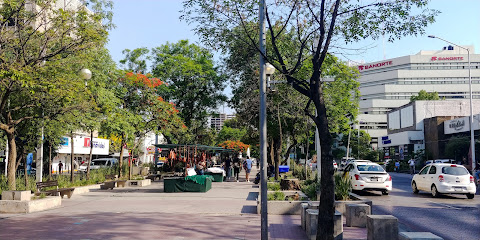
Paseo Chapultepec
Explore the vibrant Paseo Chapultepec in Guadalajara, a perfect blend of art, culture, and nature for an unforgettable experience.
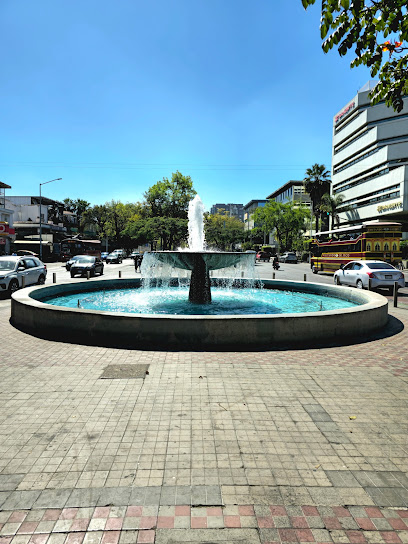
Andador Cultural Chapultepec
Explore the artistic essence of Guadalajara at Andador Cultural Chapultepec, a serene park filled with art, culture, and culinary delights.
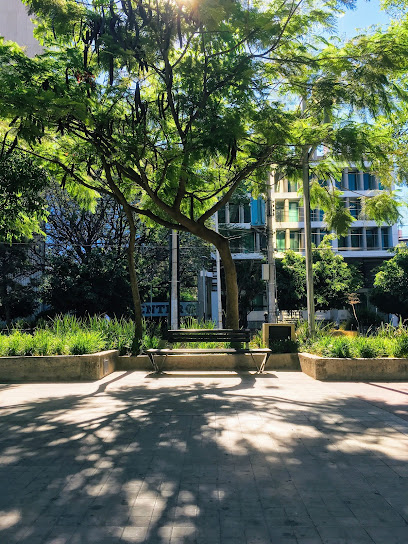
Camellon Chapultepec
Explore the lush landscapes and vibrant culture of Camellon Chapultepec, Guadalajara's urban oasis, perfect for relaxation and local cuisine.
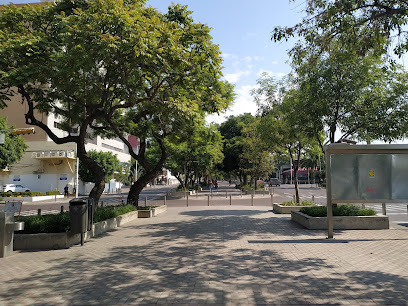
Mural Gigante FRIDA KHALO
Explore the stunning Mural Gigante FRIDA KHALO in Guadalajara, a vibrant tribute to the iconic artist, capturing the essence of Mexican culture.
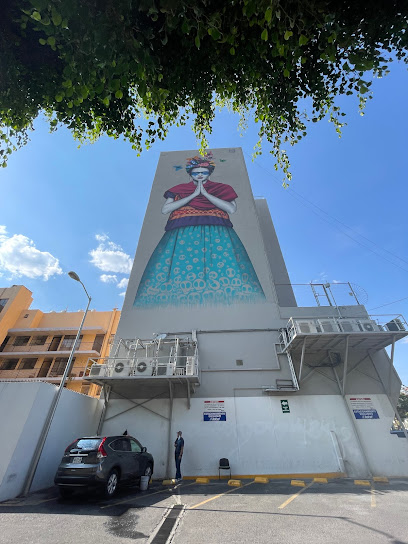
Tianguis de Artesanías Chapultepec
Experience the charm of Tianguis de Artesanías Chapultepec, a vibrant flea market in Guadalajara offering local crafts and delicious street food.
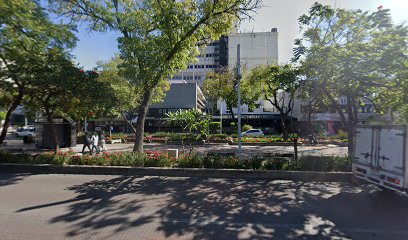
Unmissable attractions to see
Acuario Michin Guadalajara
Discover the vibrant marine life and stunning exhibits at Acuario Michin Guadalajara, a premier aquarium and zoo experience in the heart of Jalisco.
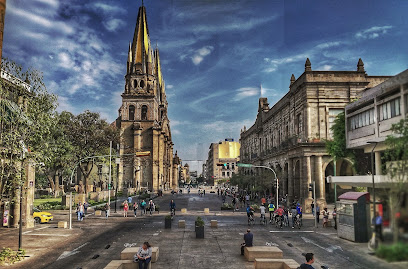
Fox in a Box Guadalajara - Escape Rooms
Discover the ultimate escape room experience at Fox in a Box Guadalajara, where teamwork and fun collide in a captivating adventure.
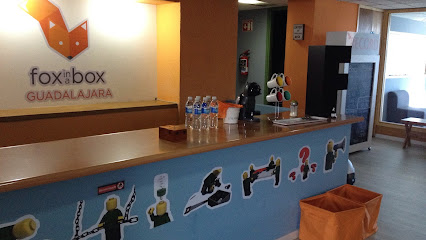
Paseo Chapultepec
Discover the charm of Paseo Chapultepec, a vibrant park in Guadalajara filled with art, culture, and lush greenery for a refreshing escape.
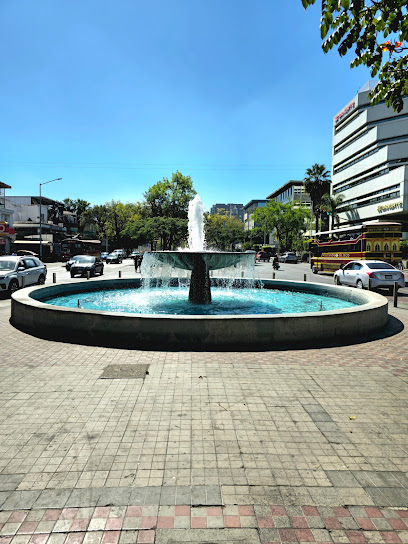
Andador Cultural Chapultepec
Explore the vibrant Andador Cultural Chapultepec, a pedestrian park filled with art, cafés, and local charm in the heart of Guadalajara.
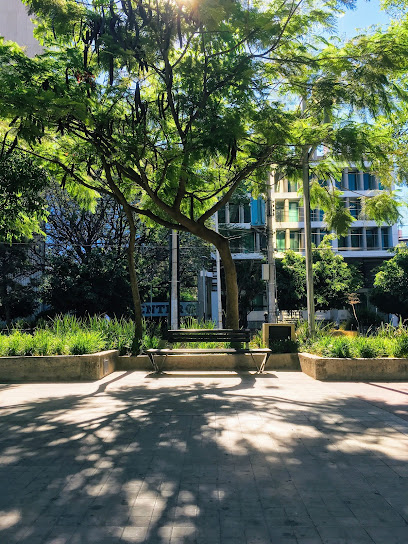
Camellon Chapultepec
Experience the vibrant atmosphere of Camellon Chapultepec, a charming promenade in Guadalajara filled with nature, culture, and local delights.
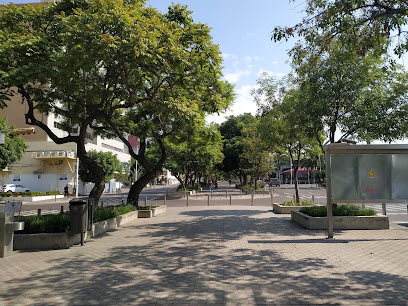
Essential places to dine
TOMATE Taquería
Experience the true taste of Mexico at TOMATE Taquería in Guadalajara – where every taco tells a story!
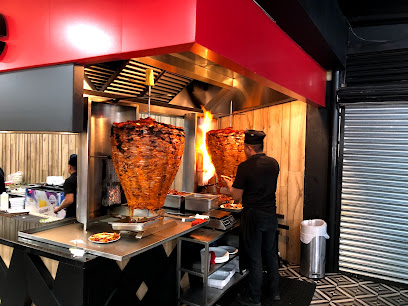
Boca del Cielo Chapultepec
Discover Boca del Cielo Chapultepec: A seafood gem in Guadalajara where fresh flavors and vibrant ambiance create unforgettable dining experiences.
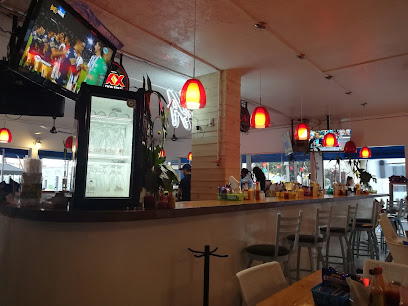
La Insurgente
Discover the vibrant flavors of Mexico at La Insurgente in Guadalajara - where tradition meets contemporary culinary excellence.
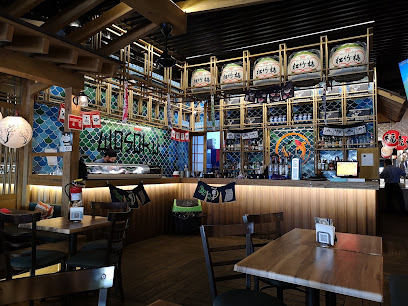
The Bone House
Discover the vibrant flavors of Guadalajara at The Bone House, where delicious grilled dishes meet lively ambiance.
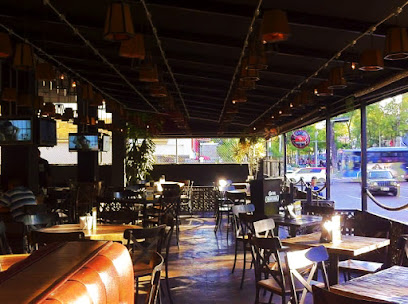
Casa Dolores - Av. Chapultepec
Experience authentic Mexican cuisine at Casa Dolores in Guadalajara's Colonia Americana – where tradition meets modern flavor.
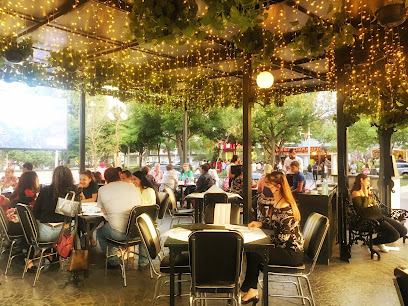
Río Viejo
Experience the essence of Mexican cuisine at Río Viejo in Guadalajara—where tradition meets innovation in every delicious bite.
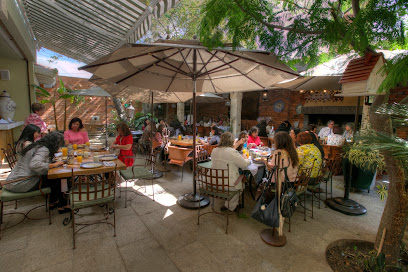
La Nacha
Discover La Nacha: Guadalajara's vibrant grill restaurant offering mouthwatering dishes and a lively atmosphere perfect for every occasion.
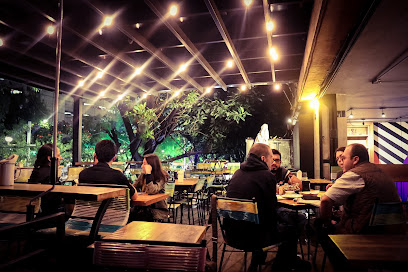
Rosarito
Experience the charm of Rosarito: Stunning beaches, delightful cuisine, vibrant culture, and endless adventure await you in this coastal paradise.

CARBÓN - Av. Chapultepec
Savor the authentic taste of Argentinian cuisine at CARBÓN - Av. Chapultepec in Guadalajara's vibrant Colonia Americana.
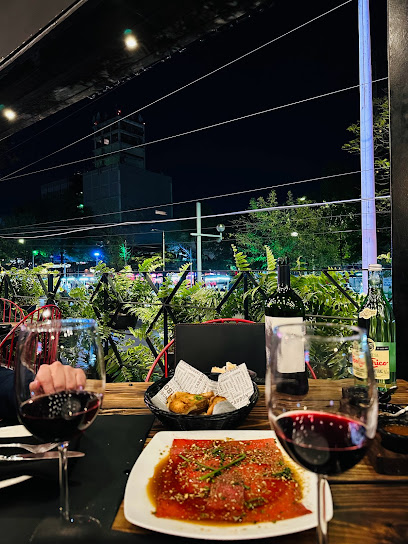
TEQUILERIA GUADALAJARA
Experience authentic tequila culture at Tequileria Guadalajara, where rich flavors meet vibrant ambiance in Jalisco's heart.
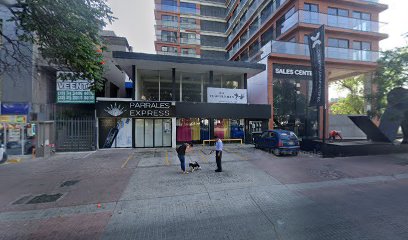
Markets, malls and hidden boutiques
Plaza Punto Chapultepec
Experience the lively Plaza Punto Chapultepec, Guadalajara's premier shopping mall with diverse stores, delicious dining, and vibrant entertainment options.
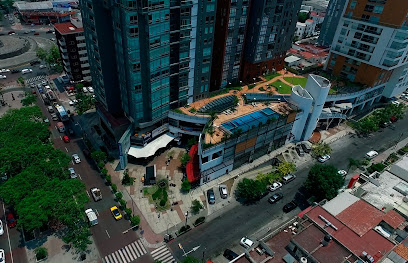
Linka Boutique Chapultepec
Discover exquisite formal wear at Linka Boutique Chapultepec in Guadalajara, where style meets sophistication in a chic shopping experience.
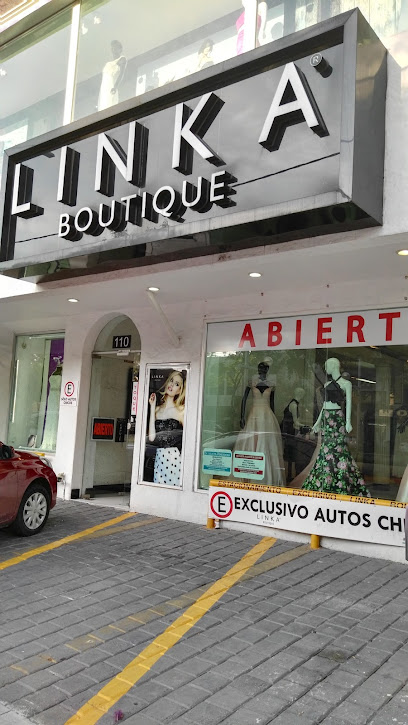
Camellon Chapultepec
Experience the lively charm of Camellon Chapultepec, a vibrant shopping destination in Guadalajara that blends local culture with modern retail.

L'Femme Novias
Discover your dream wedding dress at L'Femme Novias, a top bridal shop in Guadalajara, blending elegance, style, and personalized service for every bride.

Paseo de las Artes
Discover the vibrant Paseo de las Artes in Guadalajara, where shopping, art, and dining come together for an unforgettable experience.

Tianguis de Artesanías Chapultepec
Explore the colorful Tianguis de Artesanías Chapultepec, a vibrant flea market in Guadalajara featuring local crafts and delicious street food.
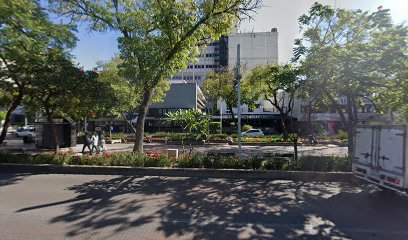
Chapultepec, Guadalajara
Discover the latest women's fashion trends at Chapultepec, an iconic boutique in the heart of Guadalajara, showcasing local artistry and modern style.
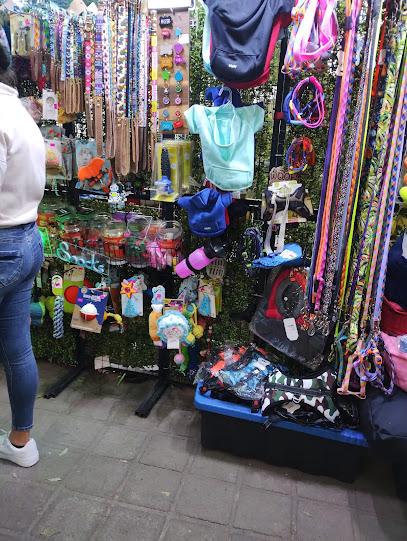
FRUGO
Explore the vibrant local flavors at FRUGO, a unique store in Guadalajara's Colonia Americana, where culinary treasures await every visitor.
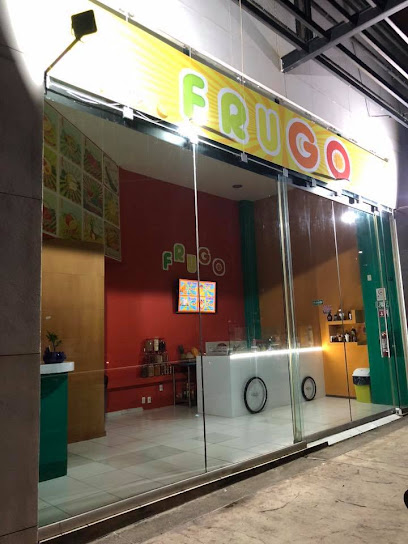
U Topic
Explore U Topic in Guadalajara for a unique selection of trendy clothing and accessories that reflect local culture and style.

GDL Handbags
Explore GDL Handbags in Guadalajara for unique, handcrafted bags that blend local artistry with modern style.

Essential bars & hidden hideouts
York Pub
Experience the local nightlife at York Pub, where great drinks, tasty bites, and vibrant atmosphere await in Guadalajara's Colonia Americana.
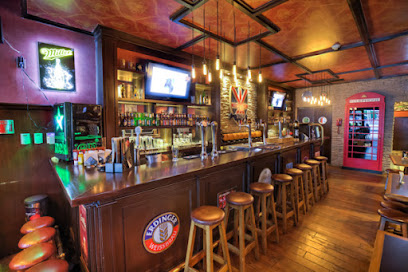
Bananas
Experience the vibrant nightlife of Guadalajara at Bananas Cafe, where delicious cocktails and a lively atmosphere await.
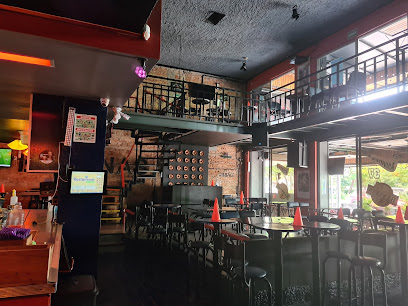
Cervecería Chapultepec
Discover the vibrant nightlife at Cervecería Chapultepec, a lively bar in Guadalajara offering great drinks, delicious bites, and electrifying live music.
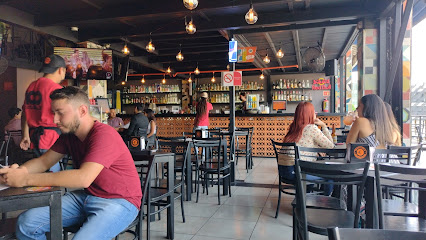
The URBAN LIVE
Discover the vibrant nightlife of Guadalajara at The URBAN LIVE, where live music and an electrifying atmosphere create unforgettable experiences.
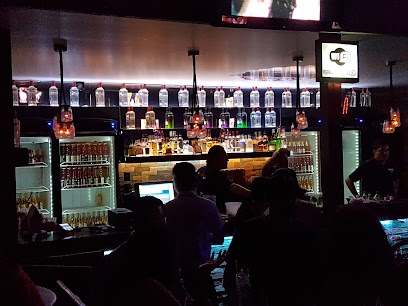
Escutia
Experience Escutia, the vibrant bar in Guadalajara offering delicious food, creative cocktails, and a lively atmosphere perfect for socializing.
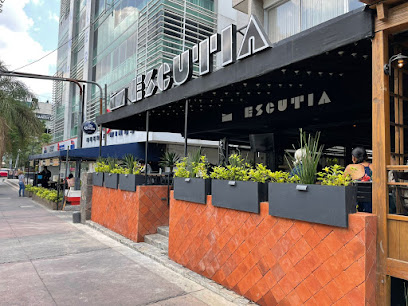
La Terraza de Chapu
Discover the lively nightlife at La Terraza de Chapu, where vibrant culture and delicious drinks come together in Guadalajara's Colonia Americana.
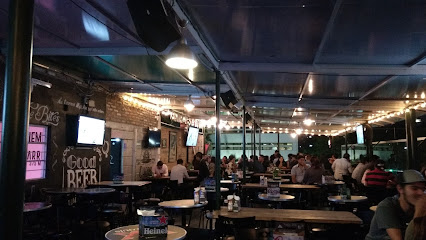
La Nacha
Experience the vibrant flavors of Guadalajara at La Nacha, where grilled specialties meet a lively atmosphere in the heart of Americana.
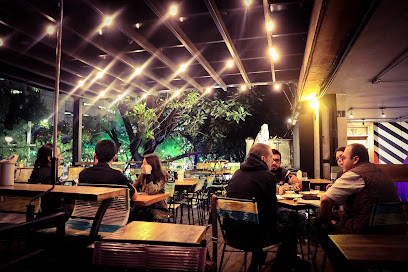
El Grillo
Explore the vibrant flavors of Guadalajara at El Grillo, a lively brewpub offering unique craft beers and delicious local cuisine.
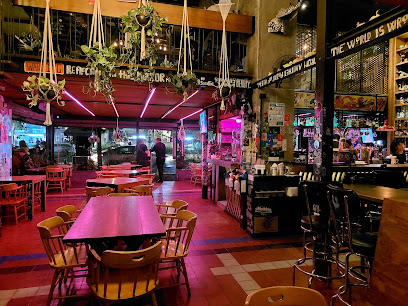
Bar americas
Bar Americas in Guadalajara: Where electrifying beats and vibrant nightlife collide for an unforgettable experience.
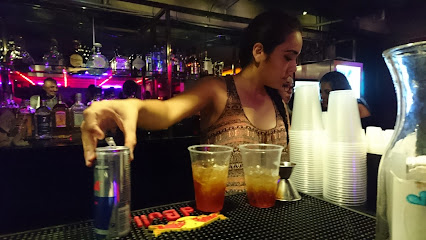
Aloha Bar Chapultepec
Experience the vibrant nightlife and tropical flavors at Aloha Bar Chapultepec, a must-visit destination in Guadalajara's Colonia Americana.
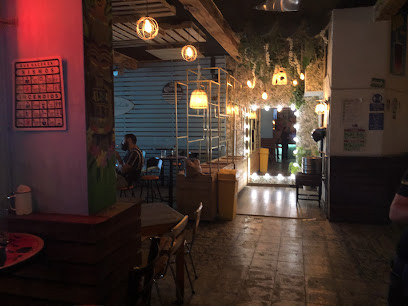
Local Phrases
-
- HelloHola
[O-la] - GoodbyeAdiós
[A-di-ós] - YesSí
[See] - NoNo
[No] - Please/You're welcomePor favor/De nada
[Por fa-vor/De na-da] - Thank youGracias
[Gra-cias] - Excuse me/SorryPerdón/Lo siento
[Per-dón/Lo cien-to] - How are you?¿Cómo estás?
[¿Co-mo es-tás?] - Fine. And you?Bien. ¿Y tú?
[Bie-n. ¿Y tu?] - Do you speak English?¿Hablas inglés?
[¿A-blas in-glés?] - I don't understandNo entiendo
[No en-tien-do]
- HelloHola
-
- I'd like to see the menu, pleaseMe gustaría ver el menú, por favor
[Me gus-ta-rí-a ver el me-nú, por fa-vor] - I don't eat meatNo como carne
[No co-mo car-ne] - Cheers!¡Salud!
[¡Sa-lud!] - I would like to pay, pleaseMe gustaría pagar, por favor
[Me gus-ta-rí-a pa-gar, por fa-vor]
- I'd like to see the menu, pleaseMe gustaría ver el menú, por favor
-
- Help!¡Ayuda!
[¡A-yu-da!] - Go away!¡Vete!
[¡Ve-te!] - Call the Police!¡Llama a la policía!
[¡Ya-ma a la po-li-cía!] - Call a doctor!¡Llama a un médico!
[¡Ya-ma a un mé-di-co!] - I'm lostEstoy perdido/a
[Es-toy per-di-do/a] - I'm illEstoy enfermo/a
[Es-toy en-fer-mo/a]
- Help!¡Ayuda!
-
- I'd like to buy...Me gustaría comprar...
[Me gus-ta-rí-a com-prar...] - I'm just lookingSolo estoy mirando
[So-lo es-toy mi-ran-do] - How much is it?¿Cuánto cuesta?
[¿Cuan-to cues-ta?] - That's too expensiveEsto es demasiado caro
[Es-to es de-ma-sia-do ca-ro] - Can you lower the price?¿Puedes bajar el precio?
[¿Pue-des ba-jar el pre-cio?]
- I'd like to buy...Me gustaría comprar...
-
- What time is it?¿Qué hora es?
[¿Qué ho-ra es?] - It's one o'clockEs la una
[Es la u-na] - Half past (10)Las diez y media
[Las diez y me-dia] - MorningMañana
[Ma-ña-na] - AfternoonTarde
[Tar-de] - EveningNoche
[No-che] - YesterdayAyer
[A-yer] - TodayHoy
[Hoy] - TomorrowMañana
[Ma-ña-na] - 1Uno
[U-no] - 2Dos
[Dos] - 3Tres
[Tres] - 4Cuatro
[Cua-tro] - 5Cinco
[Cin-co] - 6Seis
[Seis] - 7Siete
[Sie-te] - 8Ocho
[O-cho] - 9Nueve
[Nue-ve] - 10Diez
[Diez]
- What time is it?¿Qué hora es?
-
- Where's a/the...?¿Dónde está un/el...?
[¿Dón-de es-tá un/el...?] - What's the address?¿Cuál es la dirección?
[¿Cual es la di-rec-ción?] - Can you show me (on the map)?¿Puedes mostrarme (en el mapa)?
[¿Pue-des mos-trar-me (en el ma-pa)?] - When's the next (bus)?¿Cuándo es el próximo (autobús)?
[¿Cuan-do es el pró-xi-mo (au-to-bús)?] - A ticket (to ....)Un boleto (a ....)
[Un bo-le-to (a ....)]
- Where's a/the...?¿Dónde está un/el...?
History of Chapultepec
-
Before the arrival of the Spanish, the area that is now Chapultepec was inhabited by indigenous peoples, including the Nahua and Purépecha. The region's lush landscape and the nearby Santiago River provided resources that supported thriving communities. Artifacts from this period highlight the cultural practices and social structures of these early inhabitants.
-
In 1542, the Spanish conquistador Nuño de Guzmán founded Guadalajara, initially in a different location before relocating it to its current site in 1549. Chapultepec became a vital part of this growing city, serving as a strategic location due to its proximity to water sources and fertile lands, contributing to the agricultural development of the area.
-
During the late 19th century, Chapultepec emerged as a significant residential area in Guadalajara. The construction of the Chapultepec Avenue and surrounding parks began, reflecting the city's modernization efforts. This period saw an influx of cultural and artistic movements that shaped the neighborhood's identity.
-
The Mexican Revolution (1910-1920) had profound effects on Chapultepec and Guadalajara as a whole. The neighborhood became a focal point for revolutionary activities, with various factions vying for control. The political upheaval brought changes in land ownership and governance, influencing the urban landscape and the lives of its residents.
-
In the late 20th and early 21st centuries, Chapultepec experienced a cultural renaissance, marked by the establishment of art galleries, cafes, and theaters. The neighborhood has become known for its vibrant cultural scene, attracting artists and young professionals. However, this gentrification has also raised concerns about the preservation of its historical character and the displacement of long-time residents.
Chapultepec Essentials
-
Chapultepec is centrally located in Guadalajara, making it easily accessible from other neighborhoods. From the historic center (Centro Histórico), you can take a local bus or an Uber, which typically takes about 10-15 minutes. The nearest metro station is 'Juárez' on Line 2, from where you can walk or take a short taxi ride. If coming from the airport, taxis and ride-sharing services are available, with the journey taking approximately 30-40 minutes depending on traffic.
-
Chapultepec is a walkable neighborhood, and many attractions can be reached on foot. For longer distances, the local bus system is efficient, with routes connecting to major areas. Taxis and ride-sharing apps like Uber are widely used for convenience. Bicycles can be rented through local bike-sharing programs, and Chapultepec has bike lanes that make cycling a pleasant option.
-
Chapultepec is generally safe for tourists, but standard precautions should be taken. Avoid walking alone late at night, especially in poorly lit areas. Specific areas to be cautious of include parts of Tetlán and nearby neighborhoods that have higher crime rates. Always stay alert, keep your belongings secure, and be wary of pickpockets in crowded places.
-
In case of emergency, dial 911 for police, medical, or fire assistance. The nearest hospital to Chapultepec is Hospital Civil de Guadalajara. It is advisable to have travel insurance that covers emergencies. For minor health issues, local pharmacies are available for over-the-counter medications.
-
Fashion: Do wear comfortable and modest clothing. Avoid overly revealing attire to respect local customs. Religion: Do respect local traditions and dress appropriately when visiting churches. Public Transport: Do be courteous and offer your seat to those in need. Don't eat or drink on public transport. Greetings: Do greet with a friendly handshake. A smile goes a long way. Eating & Drinking: Do try street food and local delicacies, but ensure they are from reputable vendors. Don't refuse food or drink offered by locals; it is seen as impolite.
-
To experience Chapultepec like a local, visit the neighborhood's parks, such as Parque Chapultepec, especially in the mornings when locals exercise. Explore local markets like Mercado de Chapultepec for fresh produce and traditional snacks. Attend neighborhood events and cultural festivals whenever possible; these are often posted on community boards or local social media groups. Engaging with local residents can lead to enriching conversations about the area’s history and culture.
Trending Landmarks in Chapultepec
-
Rotonda de los Jaliscienses Ilustres
-
Glorieta de las y los desaparecidos
-
Avenida Chapultepec
-
Monument Square of the Republic
-
Corredor Cultural Chapultepec, Guadalajara, Jalisco.
-
Paseo Chapultepec
-
Andador Cultural Chapultepec
-
Camellon Chapultepec
-
Mural Gigante FRIDA KHALO
-
Tianguis de Artesanías Chapultepec
Nearby Cities to Chapultepec
-
Things To Do in Puerto Vallarta
-
Things To Do in Guanajuato
-
Things To Do in San Miguel de Allende
-
Things To Do in Queretaro
-
Things To Do in Ixtapa-Zihuatanejo
-
Things To Do in Taxco
-
Things To Do in Mexico City
-
Things To Do in Acapulco
-
Things To Do in Puebla
-
Things To Do in Monterrey
-
Things To Do in Cabo San Lucas
-
Things To Do in Veracruz
-
Things To Do in Oaxaca
-
Things To Do in McAllen
-
Things To Do in Matamoros





